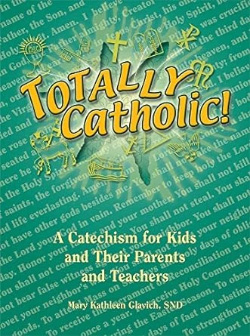
We are in the midst of a three-year National Eucharist Revival. A parish has asked me to speak about the relationship of the Blessed Virgin Mary to the Eucharist. Today I share some thoughts with you.
At the Eucharist the priest declares over the bread and wine, “This is my Body” and “This is my blood.” Jesus becomes present. Where did his body and blood come from? Mary and Mary alone. She provided the matter for his humanity and therefore for this sacrament.
At the Incarnation, through the Holy Spirit the Son of God was formed in Mary’s womb. He took his flesh and blood, his DNA, his looks entirely from her. For nine months she was a walking tabernacle. After birth, Jesus walked the earth with flesh and blood taken from her.
At the wedding in Cana, Mary prompted Jesus to change water into wine. At Mass he turns wine into his blood and bread into his body. At Cana, Mary told the servants, “Do whatever he tells you.” Well, at the Last Supper Jesus told us, “Do this in memory of me.” So because Mary directs us to obey Jesus, we do celebrate the Eucharist.
The Eucharist is the re-presentation of Jesus’s sacrifice on Calvary. There Mary stood at the foot of the cross and united herself to his sufferings and sacrifice. Likewise, at every Mass Mary, the Mother of the Church, stands with us at the altar. She offers her son just as she offered the infant Jesus to God in the Temple and her adult son again on Calvary. She also offers herself. We too offer ourselves with Jesus.

Because Mary is essential to the Eucharist, every Mass mentions her in the Eucharistic Prayer.
We don’t know if Mary was present at the Last Supper. But she was there in the Upper Room praying with the first Christians when the Holy Spirit came to them. Certainly she celebrated Eucharists with them. Imagine Mary’s joy when she received Communion from the hands of St. John or the other apostles. Once again she received into her the same Jesus she had received at the Incarnation. She was once again united with her Son.
When we receive Communion, we too house Jesus. The Eucharist is a continuation of the Incarnation. What happened to Mary happens to us at each Mass. She said, “Fiat. When we are about to take Jesus into our bodies, we say, “Amen.” No doubt Mary, the loving mother who raised Jesus, looked forward to being united with him in Communion. Christians who deeply love Jesus, their God and Savior, hunger for the Eucharist as well.
St. Peter Julian Eymard coined the title “Our Lady of the Most Blessed Sacrament” in 1868. This feast is observed on May 13, the date of Mary’s first apparition at Fatima. Holy cards of Our Lady of the Most Blessed Sacrament depict her holding the infant Jesus, who holds a ciborium with a host. The image at the start of this post is one of them.
Speaking of apparitions, usually when Mary appeared, she asked for a church to be built where the Eucharist could be celebrated: Fatima, Lourdes, Guadalupe.
St. Pope John Paull II wrote an encyclical on the Eucharist, Ecclesia de Eucharistia (The Church of the Eucharist). The sixth chapter is entitled, “At the School of Mary, ‘Woman of the Eucharist.’” He stated, “Mary can guide us toward this most holy sacrament because she herself has a profound relationship with it.” Notice that when this pope added the luminous mysteries to Mary’s rosary, he made the Eucharist one of them.

St. John Bosco had a dream that illustrated the connection of Mary and the Eucharist as our aids in following Christ. In the dream he saw a naval battle between the Church and the forces of evil. As Peter’s ship was attacked on all sides by enemy ships, two pillars arose from the sea. Peter’s ship was safely anchored between them. One pillar held a statue of Mary and the words, “Help of Christians.” On the top of the other pillar was a large host and bore the words, “Salvation of Believers.”
Here is St. Peter Julian Eymard’s prayer to Our Lady of the Blessed Sacrament:
Virgin Immaculate, perfect lover of Our Lord in the Blessed Sacrament, we ask you to obtain for us the graces we need to become true adorers of our Eucharistic God. Grant us, we beg of you, to know Him better, to love Him more, and to center our lives around the Eucharist, that is, to make our whole life a constant prayer of adoration, thanksgiving, reparation, and petition to Our Lord in the Blessed Sacrament. Amen.
V. Pray for us, O Virgin Immaculate, Our Lady of the Most Blessed Sacrament.
R. That the Eucharistic Kingdom of Jesus Christ may come among us!
• What role does Mary play in your life?








